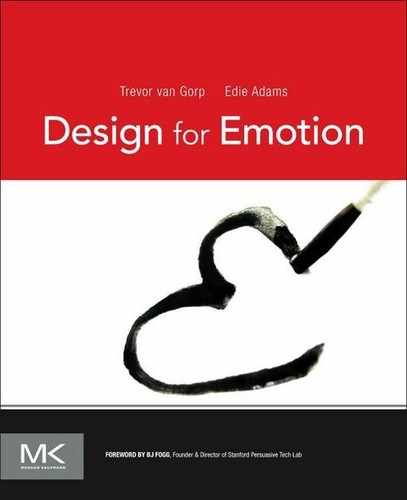Book Description
Design for Emotion introduces you to the why, what, when, where and how of designing for emotion. Improve user connection, satisfaction and loyalty by incorporating emotion and personality into your design process. The conscious and unconscious origins of emotions are explained, while real-world examples show how the design you create affects the emotions of your users.
This isn’t just another design theory book – it’s imminently practical. Design for Emotion introduces the A.C.T. Model (Attract/Converse/Transact) a tool for helping designers create designs that intentionally trigger emotional responses. This book offers a way to harness emotions for improving the design of products, interfaces and applications while also enhancing learning and information processing. Design for Emotion will help your designs grab attention and communicate your message more powerfully, to more people.
- Explains the relationship between emotions and product personalities
- Details the most important dimensions of a product's personality
- Examines models for understanding users' relationships with products
- Explores how to intentionally design product personalities
- Provides extensive examples from the worlds of product, web and application design
- Includes a simple and effective model for creating more emotional designs
Table of Contents
- Cover Image
- Table of Contents
- Title
- Copyright
- Acknowledgments
- Author Bios
- Foreword
- Introduction
- Chapter 1. Why Design for Emotion?
- Chapter 2. What is Emotion?
- Chapter 3. When Do We Design for Emotion?
- Chapter 4. Where Do We Design for Emotion?
- Chapter 5. How Do We Design for Emotion?
- Chapter 6. Interviews and Case Studies
- Trademarks
- Index
